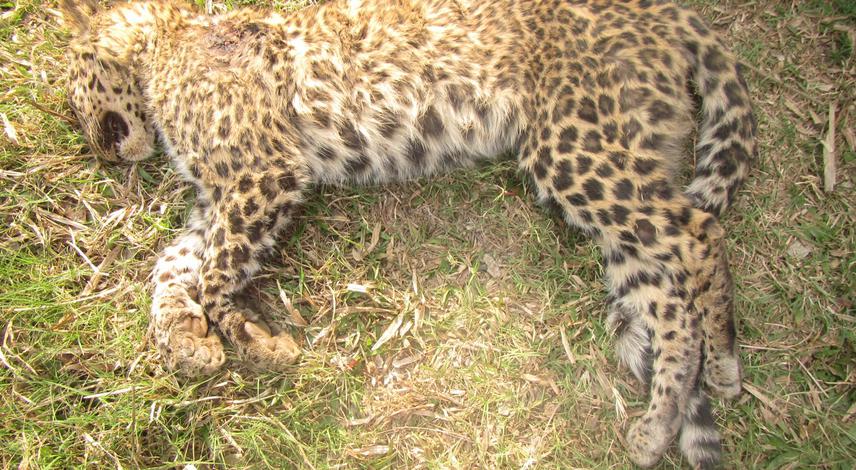Pratikshya Kandel
The growing Human-Wildlife Conflict in community forests suggests that it is becoming a serious threat to the survival of wild fauna including endangered species as well as the welfare of local people. The project aims to document status, explore, analyse and demonstrate management of wildlife in community forests and recommend strategies and actions to ensure human-wildlife coexistence.

A leopard was killed during a conflicts March 2014, Tanahu.
Human-Wildlife Conflict (HWC) in Nepal was limited within and around protected area systems. With successful rehabilitation and restoration of degraded habitats through community forestry, wild fauna begun to occupy such habitats. The growing HWC in Community Forest (CF) suggests that it is becoming a serious threat to the survival of endangered species as well as welfare of local people. On the other hand, existing policy, regulations and practices of CF ignore wildlife management.
Considering the human population growth rate, increasing demand and dependency for resources, it is clear that human wildlife conflict will not be eliminated in the near future. In addition, HWC is not restricted to particular CF, geographical regions or climatic conditions, but is common to all CFs where wildlife and human population coexist and share limited resources. The problem is multifaceted.
HWC can be minimized through appropriate policies, good management practices and approaches. For this reason, a better understanding of conflict management option is crucial. The project will initiate management of wildlife in community forestry by developing interventions at two different levels using two different approaches. This includes suggesting at policy level where focus will be for developing appropriate strategic framework for wildlife management in CFs and at operational level, with a methodological framework, it focuses on exploring the potential of CF at clustering on the ground for appropriate wildlife management.
The project will recommend two different approaches to resolve HWC- short-term mitigation tools which need to be combined with longer-term preventive strategies. This will address to some extent the problems of existing HWC thereby reducing the threat to survival of endangered species and enhancing co-existence between wildlife, farmers and their livestock. The findings will contribute to the strategies and approaches to be considered while formulating national level HWC mitigation strategy.
The key outcomes of this project will be as follows:
1. The current state, causes and trends on HWC in CF in selected sites
2. Community perceptions on wildlife management and HWC
3. Wildlife management initiation through networking and joint management actions in selected sites
4. Operational framework to address HWC in CF and
5. Strategic inputs for national level HWC mitigation strategy